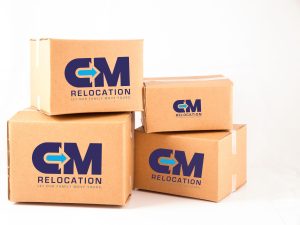Moving to a new country is an exciting adventure, but it also comes with its fair share of challenges. One of the most crucial aspects of an international move is ensuring that your belongings are properly packed and protected for the journey ahead. To achieve a smooth and secure transit, understanding how we select and use the right packing materials is paramount. In this comprehensive guide, we’ll delve into the diverse array of packing materials that we use for an international move, helping you understand how our team safeguards and cares for your cherished possessions.
1. Cardboard Boxes:

Cardboard boxes are the cornerstone of any packing endeavor. They come in various sizes, providing versatility for packing items of different dimensions. We only use sturdy, double-walled boxes, these prove especially necessary for fragile and/or heavy items. Reinforced corners and edges enhance durability, ensuring your belongings remain intact throughout transit.
2. Packing Tape:

Strong packing tape is your go-to adhesive for sealing boxes. We use high-quality tape that can withstand the rigors of international shipping. We also use packing tape to reinforce the bottom and top seams of boxes to prevent accidental openings.
3. Bubble Wrap:

When it comes to protecting delicate items, bubble wrap is a lifesaver. Its cushioning properties safeguard fragile objects from impact and vibrations during transit. We wrap individual items and in some cases line the interior of boxes to create a protective barrier. For added environmental consciousness, we use biodegradable bubble wrap.
4. Packing Paper:

Packing paper is essential for wrapping and cushioning items. It provides a layer of protection and prevents items from rubbing against each other. We use unprinted newsprint. Wrapping fragile items, glassware, and electronics in packing paper helps prevent scratches and breakage.
5. Foam Peanuts:

Foam peanuts, also known as packing peanuts, are lightweight and versatile void-fill materials. They help fill empty spaces in boxes, preventing items from shifting during transit. While effective, foam peanuts are less environmentally friendly and can be challenging to dispose of responsibly.
6. Wardrobe Boxes:

Wardrobe boxes are a convenient solution for transporting clothing on hangers. These boxes feature a metal bar for hanging garments. They are particularly useful for formal wear, coats, and dresses.
7. Custom Crates:

For exceptionally valuable or delicate items like television sets and pianos, custom crates offer unparalleled protection. These specially designed containers are tailored to fit the exact dimensions of your items, providing a secure and shock-absorbent enclosure.
8. Labels and Markers:

Proper labeling is essential for organizing and streamlining your move. Use labels and markers to indicate the contents of each box, as well as its intended destination in your new home. This practice makes unpacking and setting up your new space significantly more efficient.
Conclusion

An international move presents both exciting opportunities and logistical challenges. By selecting the right packing materials, you can ensure that your belongings traverse the globe safely and securely. From sturdy cardboard boxes to specialized protective wraps, each material plays a vital role in safeguarding your possessions during transit. Remember, a well-prepared packing strategy not only protects your valuables but also provides peace of mind as you embark on your new adventure. So, as you gather your packing materials and begin to wrap and secure your belongings, know that you are taking proactive steps toward a successful and worry-free international move.
